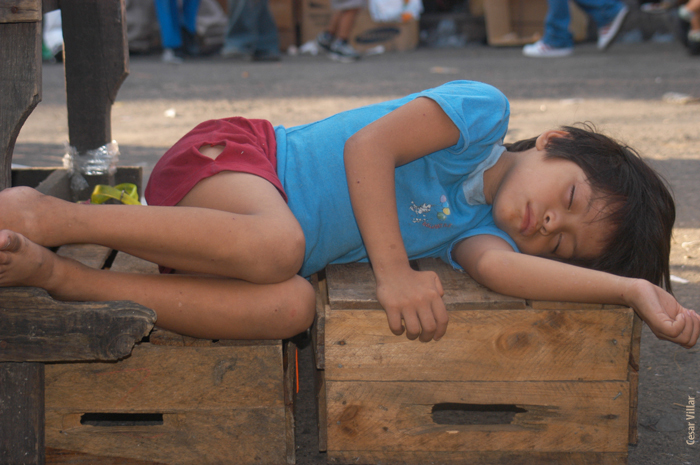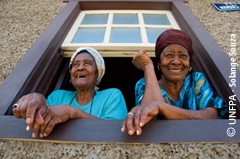Measuring Child Poverty through their Rights

One in five children in Latin America lives in conditions of extreme poverty, that is a total of 32 million
children.
Poverty among children and adolescents is caused by insufficient household income, limited access to basic services and other factors referring to survival, discrimination and exclusion. This impedes them from exercising their fundamental rights established in the Declaration of the Rights of the Child and other international instruments.
Through the ECLAC-UNICEF initiative “Child poverty, inequality and citizenship in Latin America and the Caribbean”, in 2008-2009 ECLAC carried out the first comparative study on child poverty in the region. The investigation examined the principle of access to and exercise of a specific number of economic and social rights in nutrition, potable water, sanitation, dignified housing, education and information, as well as income.
The study established thresholds to analyse compliance with children’s rights. The first threshold of severe deprivation refers to the extreme violation of a child’s rights and classifies under extreme child poverty.
The second threshold, moderate deprivation, refers to the limitations to full compliance of each right, and along with the first threshold, determines total child poverty.
One in five children in Latin America – a total of 32 million boys and girls - lives in conditions of extreme poverty. Total child poverty encompasses 81 million minors under 18.
Measuring poverty through a rights perspective implies considering a child poor when any of his or her rights isn’t respected, even just one. In the region, one of every three children living in extreme poverty is being seriously deprived of more than one fundamental right. This “syndrome” of multiple deprivations is a sign of a sure loss of opportunities for developing a child’s potentials, and is at the root of the intergenerational reproduction of poverty.
The place of residence and ethnic origin also determine compliance of children’s rights. In Latin America, the probability of being extremely poor among rural children is four times higher than among children living in urban areas. In addition, one of every three children of indigenous origin or Afro-descendants is extremely poor, and two out of three live in conditions of total child poverty.
The study reveals that measuring child poverty from a rights perspective as well as in terms of household income provides a more precise definition of their needs and the public policies required to eradicate poverty in the region.
In 2007, 62.7% of Latin American children (113 million) suffered some degree of poverty, deprived or denied a right and/or living in a household with insufficient income.
The region is in debt with its children and countries have advanced little in adopting specific policies of universal scope to reduce child poverty with a comprehensive approach. We are facing a situation that demands redesigning poverty-reduction policies to respond to the experience and needs of children.
Direct intervention is needed in the provision of health and nutrition, water and sanitation services, education and information. Indirect action is also required, such as increasing household income, either through the labour market or monetary transfers.
Breaking the cycle of reproduction of poverty and inequality demands innovative, decisive actions with a comprehensive approach that assumes that child poverty is multidimensional and its consequences multifaceted.
Public policies should not only seek to address current poverty levels, but also build solidary systems within a framework of a new intergenerational agreement that not only compensates today’s deprivations, but also impedes them from continuing or reappearing in the future.
This implies a sustained increase in social investment and public spending on infancy to improve the life conditions of children while at the same time foster more inclusive and equal country development.







